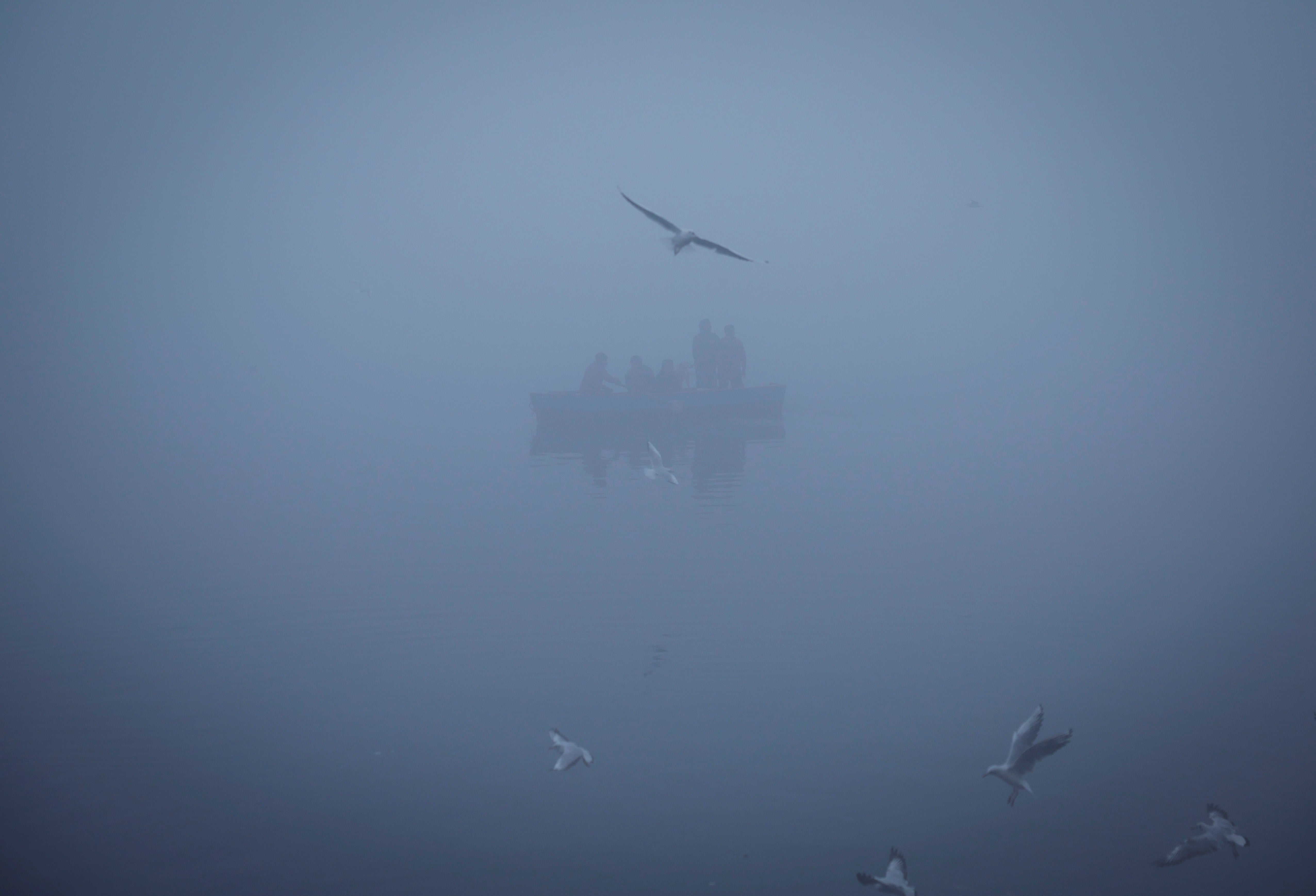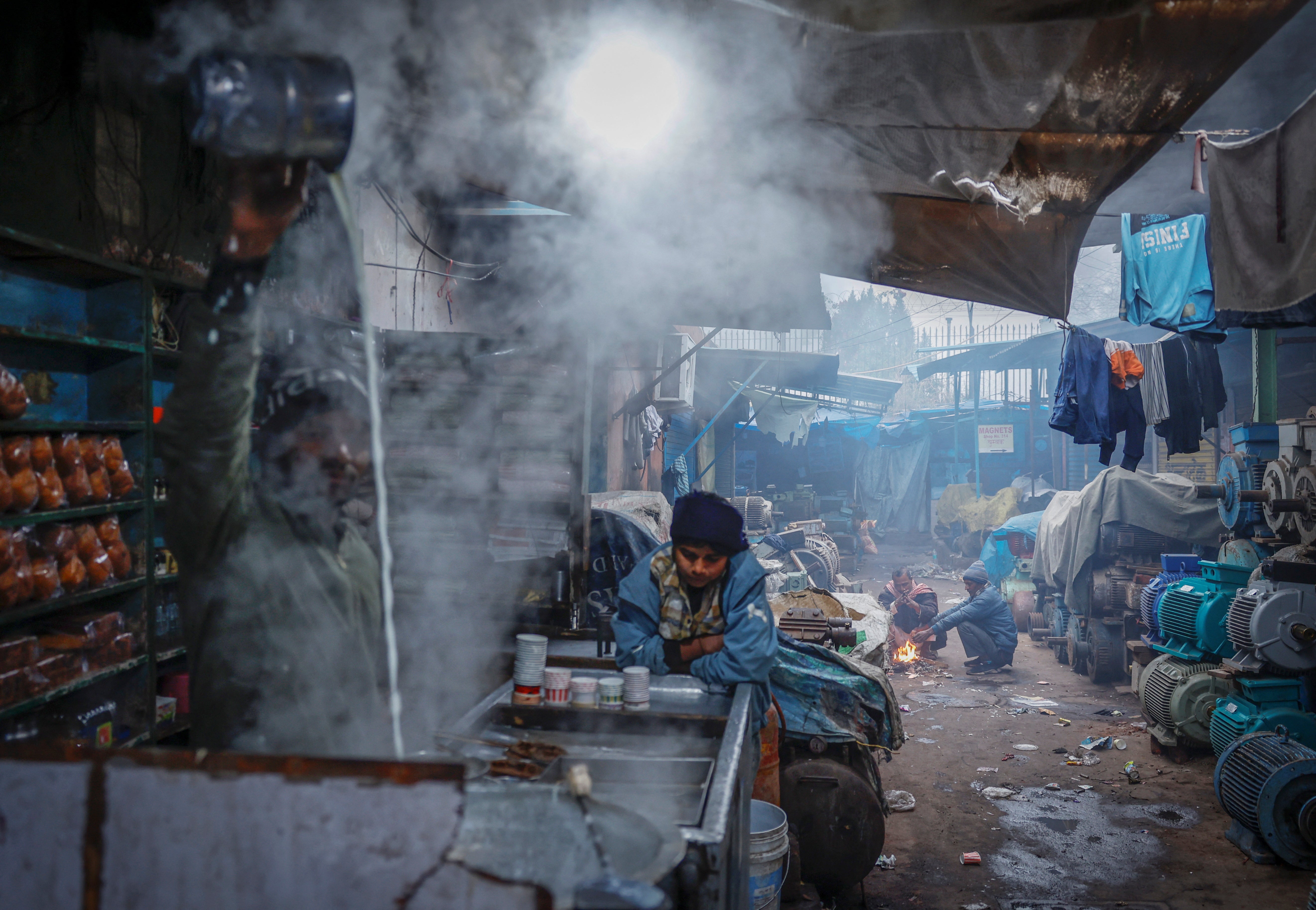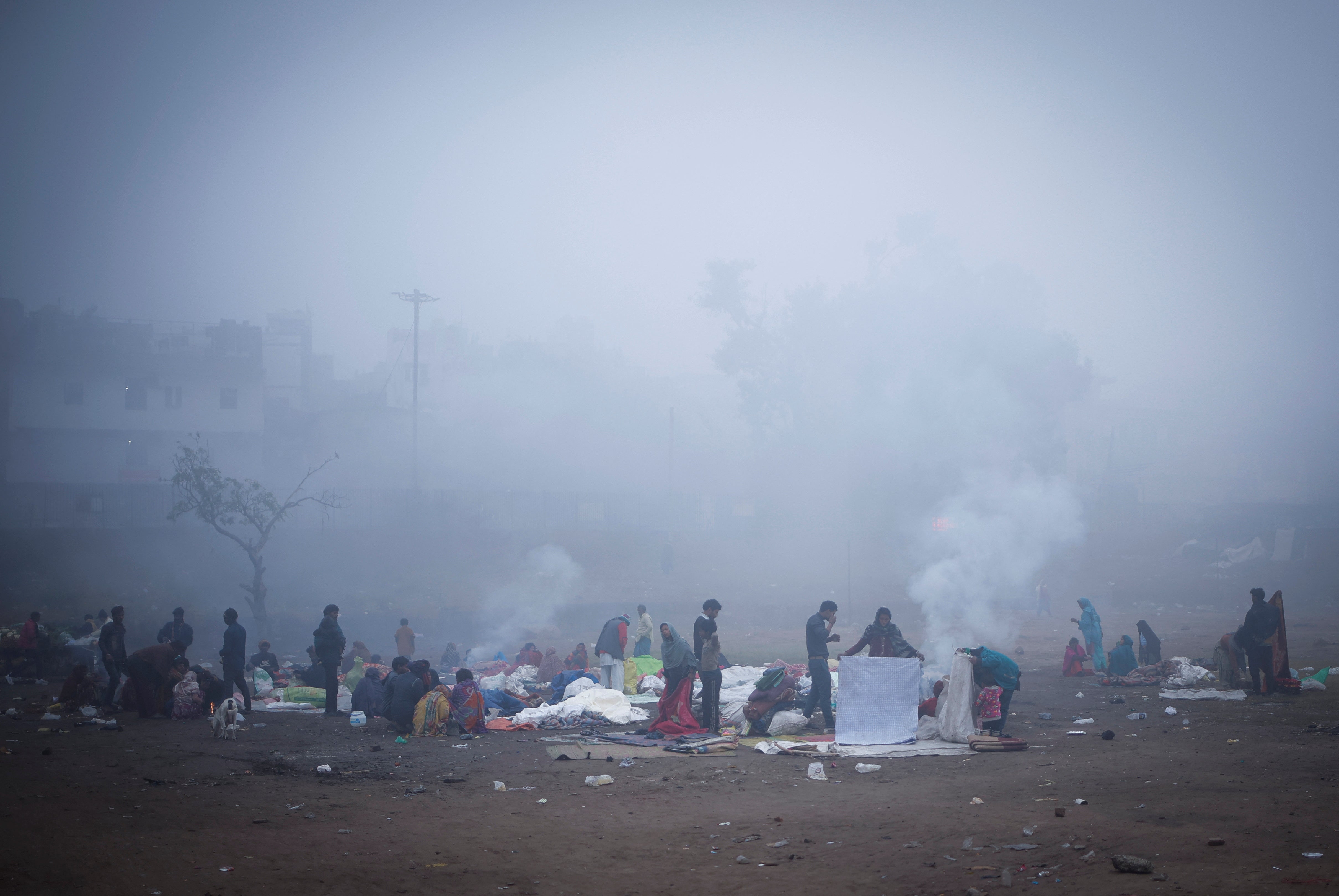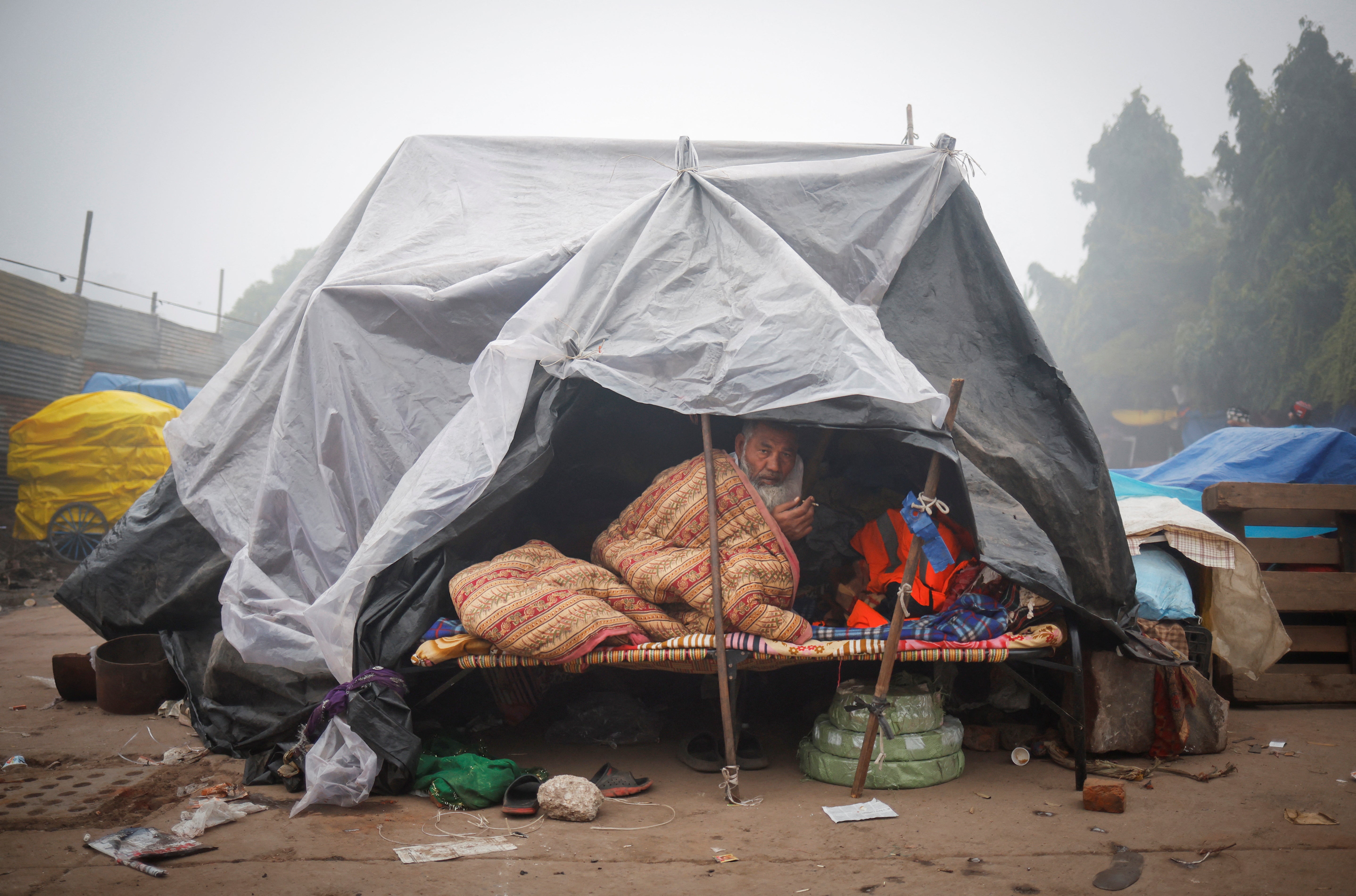Toxic smog blankets Delhi as severe air pollution disrupts daily life and travel
Health experts tell residents to limit outdoor activities and wear masks
Your support helps us to tell the story
From reproductive rights to climate change to Big Tech, The Independent is on the ground when the story is developing. Whether it's investigating the financials of Elon Musk's pro-Trump PAC or producing our latest documentary, 'The A Word', which shines a light on the American women fighting for reproductive rights, we know how important it is to parse out the facts from the messaging.
At such a critical moment in US history, we need reporters on the ground. Your donation allows us to keep sending journalists to speak to both sides of the story.
The Independent is trusted by Americans across the entire political spectrum. And unlike many other quality news outlets, we choose not to lock Americans out of our reporting and analysis with paywalls. We believe quality journalism should be available to everyone, paid for by those who can afford it.
Your support makes all the difference.Delhi was engulfed by a thick blanket of hazardous smog on Friday, causing alarm over disruption to air travel and damage to public health.
The Indian capital city’s air quality degraded to the extent that visibility was reduced to almost zero in some areas, resulting in train and flight delays.
The live pollution rankings published by Swiss air quality monitor IQAir listed Delhi ranked as the third most polluted capital on Friday.
Although no flight cancellations were reported, a Delhi airport spokesperson warned that planes without special equipment for low-visibility landings could face difficulties.
Airlines IndiGo and SpiceJet also warned of potential delays due to the worsening weather conditions.

By 10.14am, the aviation tracking website FlightRadar24 reported an average delay of eight minutes for 20 flights. Train services within Delhi were also affected, with delays reported on multiple routes.
The air quality index in New Delhi reached 351 on Friday, putting it well outside the "good" range. AQI is a measure of five major air pollutants and is considered “good” when under 50.
AQI above 400 is considered “severe”, meaning the smog should be considered harmful to even healthy individuals and outdoor activity should be avoided where possible.

The central government’s Sameer App confirmed the "very poor" AQI rating, a status that has plagued the city since the onset of winter. The wider National Capital Region saw similarly poor readings, with AQI levels measuring between 214 and 291.
Following a brief respite due to rainfall on 1 January, air quality in the city deteriorated rapidly, reverting to the "poor" category by Thursday.
The year just gone was marked by particularly severe air pollution in Delhi, with 17 days classified as having a "severe" AQI of over 400, the most since 2022.

Alongside toxic air, Delhi saw dense fog on Friday morning that greatly reduced visibility in many areas. The India Meteorological Department forecast the fog, along with a cold wave, to continue through the weekend, with temperatures ranging between 8.5C and 20C.
The weather department said light to moderate rainfall was expected on 6 January, offering some hope for at least temporary improvement in air quality and visibility.

Given the hazardous air quality, health experts urged Delhi’s residents to limit outdoor activities, particularly in the early mornings and evenings when pollution levels would likely peak.
They also recommended using masks outdoors, air purifiers indoors, and avoiding poorly ventilated spaces to mitigate health risks, especially for those with respiratory conditions.

Join our commenting forum
Join thought-provoking conversations, follow other Independent readers and see their replies
Comments